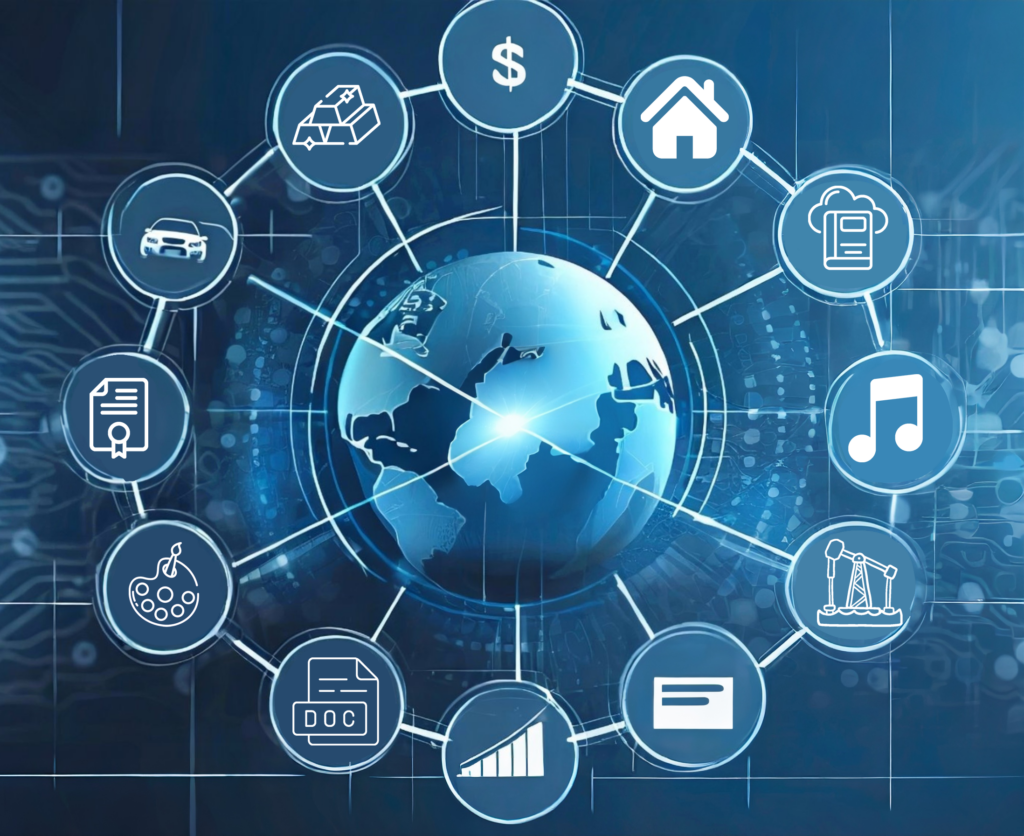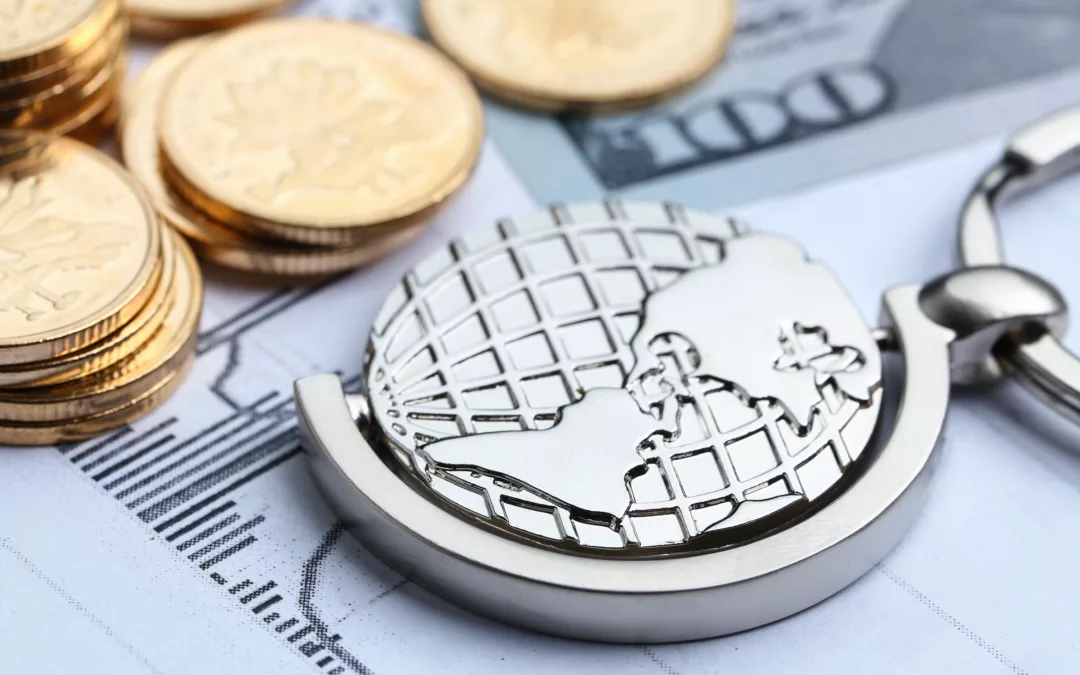The world of finance is on the cusp of a profound transformation, driven by the fusion of blockchain technology, smart contracts, and the rise of decentralized finance (DeFi). At the heart of this paradigm shift is the tokenization of real-world assets (RWAs). This article explores the driving forces behind this trend and the significant opportunities it presents for investors, entrepreneurs, and traditional financial institutions.
What is a Digital Asset?
Digital assets are intangible and exist in a digital format. They can be stored on a variety of electronic devices, such as computers, mobile phones, and media players. The use of blockchain technology may or may not be involved. Digital assets include art, software, music, videos, documents, digital products, shares, and other forms. They are owned by individuals, businesses, or governments and can be bought, sold, or licensed.
What is the Tokenization of RWA (Real-World Asset)?
Although RWAs fall under the category of digital assets, they differ from the general concept because the process of tokenizing real-world assets creates a digital investment platform that uses smart contracts and remains on a blockchain, linked to tangible assets such as real estate, precious metals, art, collectibles, loans and US bonds more recently.
Instead of holding a physical deed, the property is recorded on the blockchain, enabling it to be traded or divided for better investment opportunities. This makes it a unique source of returns in DeFi (decentralized finance), which provides additional prospects for returns and portfolio diversification.
The Benefits of Tokenizing Real-World Assets
1. Cost Efficiency: By removing middlemen like lawyers, brokers, and banks, transaction costs plummet.
2. 24/7 Trading: Unlike traditional markets with “working hours,” tokenized assets can be traded around the clock.
3. Liquidity Boost & Accessible Ownership: Fractional ownership enhances accessibility and liquidity in traditionally illiquid markets.
4. Transparency and Trust: The blockchain’s transparent ledger instills trust and accountability among traders.
This approach streamlines transactions and reduces the complexity of coordinating with numerous intermediaries. It’s a transformative shift from the traditional model.

RWA Ownership on the blockchain
Tokenization is transforming the way we view ownership of high-value assets, such as great artwork, by breaking down complex investments into accessible “shares” for purchase, similar to fractions of a publicly traded company. Previously, owning such assets was only viable for the wealthy due to exorbitant costs.
However, tokenization extends beyond the art industry and offers newfound accessibility to a broad range of assets. This innovative method is gaining momentum and drawing the interest of established financial institutions, suggesting a bright future for its use in asset management.
Tokenization Goes Beyond Tangibles
Tokenization encompasses more than just high-value assets like vintage cars, real estate, and gold. It extends to U.S. Treasuries, currency, and stocks. Tokenizing stocks, for instance, allows for efficient fractional ownership and faster settlement times compared to traditional markets. This enhances accessibility for smaller investors who might otherwise be priced out.
In the realm of fiat currency, stablecoins stand out as a prominent form of real-world asset tokenization. Tokens like Tether and USDC represent tokenized dollars, enabling swift and direct settlements between parties.
A Bright Future for RWA Tokenization
Traditional financial institutions are embracing the idea of tokenizing assets they already trade. Franklin Templeton, an investment fund giant, has launched groundbreaking initiatives. Their Franklin OnChain U.S. Government Money Fund, registered in 2021, leverages a public blockchain for transactions and share ownership records. It’s a pioneering step toward a tokenized future.
Also, the Bank of America has recognized RWA tokenization as a “key driver of digital-asset adoption.” Their report underscores the successful tokenization of the gold market, with over $1 billion in investments. The demand for tokenized U.S. Treasury bonds is surging, with the combined market capitalization of tokenized money market funds nearing $500 million.
With global business advisory firm Boston Consulting Group forecasting that the tokenized asset market could reach $16 trillion by 2030, the future of tokenization is undeniably promising. These numbers are similar to a recent study from 21.co that suggests this market could expand to a staggering $10 trillion by 2030. The key driver behind this growth is the increasing adoption of blockchain technology by traditional financial institutions, a phenomenon referred to as TradFi.
The ERC3643 protocol: The token standard for RWA
Ethereum is preparing for a significant shift with the introduction of the T-Rex protocol, also known as ERC3643. This protocol is an open-source collection of smart contracts that facilitates the creation, management, and transfer of permissioned tokens.
The protocol incorporates a decentralized identity framework, ONCHAINID, which guarantees that only users who satisfy certain predefined conditions can become token holders. This applies even to permissionless blockchains.
The movement of ERC3643 tokens is only permitted when both the investor’s conditions (via ONCHAINID) and the offering rules are met. This ensures compliance at the level of the smart contract itself.
Fuente: https://www.erc3643.org/
Conclusion
The financial landscape is in the midst of a significant transformation as the tokenization of real-world assets (RWAs) continues to gain traction. This paradigm shift, driven by blockchain technology, smart contracts, and the rise of decentralized finance (DeFi), is unlocking new opportunities for investors, entrepreneurs, and traditional financial institutions.
Tokenization not only democratizes access to traditionally high-value assets but also enhances liquidity, reduces transaction costs, and ensures 24/7 trading. This innovative approach is not confined to tangible assets; it extends to financial instruments like U.S. Treasuries, currency, and stocks, paving the way for efficient fractional ownership and faster settlements.
With traditional financial institutions beginning to embrace tokenization and the introduction of the T-Rex protocol or ERC3643 on Ethereum, the future of finance appears to be intertwined with the tokenization of RWAs. As we stand on the cusp of this transformation, it’s clear that tokenization is not only unlocking the future of finance but also redefining it.
That’s why traditional finance companies now have a golden opportunity to evolve and expand their offerings. Embracing blockchain technology and digital asset management can help them stay competitive in the rapidly changing financial landscape. By leveraging RWA tokenization, these companies can unlock new revenue streams, enhance client services, and drive innovation.
InMind Software has been at the forefront of these transformative technologies since 2008. With a wealth of experience in crafting impactful solutions, they are well-positioned to assist entrepreneurs and businesses in realizing their blockchain and DeFi ambitions. Partnering with experienced and forward-thinking organizations like us can significantly boost the chances of success.
Find out what’s possible for your business by scheduling a free 30-minute consultation with Omar. Are you curious to see what technology can do for your business? Or, do you already have a vision and need someone to come alongside you to make it a reality?
Our co-founder, Omar Saadoun, is a leading expert in emerging digital technology whose passion is to help business owners like you realize the limitless possibilities of tech.

 Co-Founder & CEO @ Inmind - Blockchain & Mobile Expert | DAO / Tokenization / Web3 | CTO @ Brainstems (Former TIEX) | Board Member @ CUTI
Co-Founder & CEO @ Inmind - Blockchain & Mobile Expert | DAO / Tokenization / Web3 | CTO @ Brainstems (Former TIEX) | Board Member @ CUTI